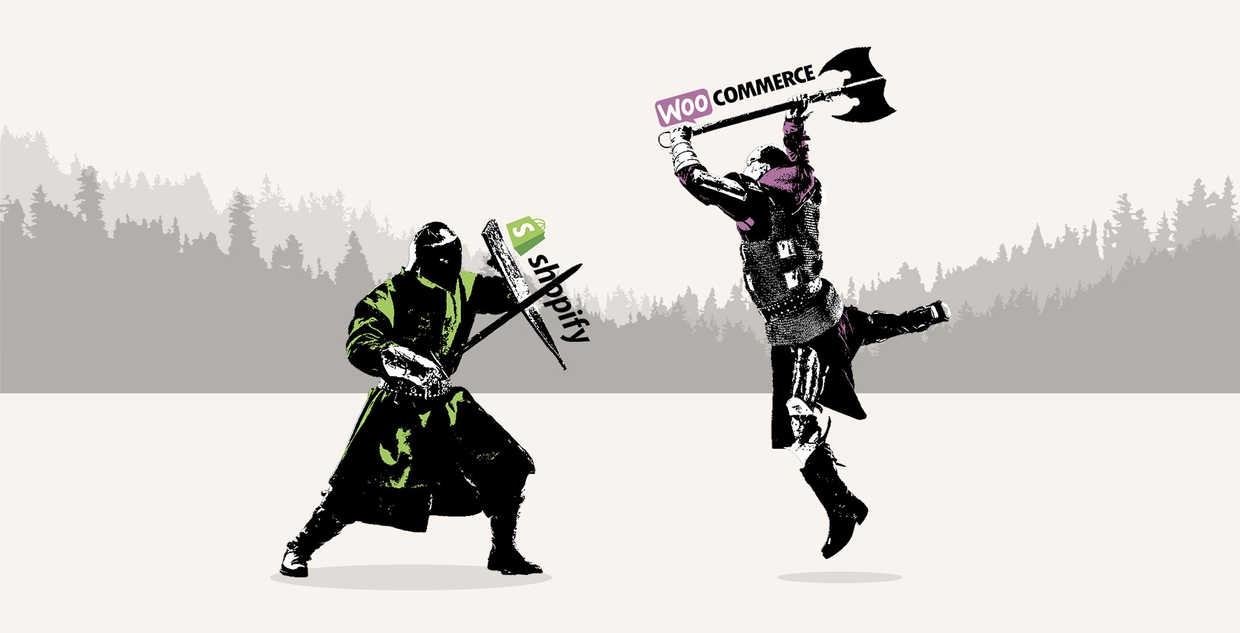


In this article, we will be taking a look at the main differences between Shopify and WooCommerce and deciding which is the better platform to run your eCommerce business.
At a glance, the freedom that you get from WooCommerce comes at a price. In other words, you need to know how to handle the technical side of your site and keep it safe.
How easy is it to launch a store on WooCommerce vs Shopify
Shopify has its own personal hosting. It has all the tools you need to manage your hosting account, saving you the hassle of looking for independent hosting services.
WooCommerce is a WordPress plugin, you’ll need to be familiar with WordPress before you can even start learning how to use WooCommerce.
You have to purchase hosting from an independent hosting provider for your WordPress account before you get started with WooCommerce.
For Shopify
- Create a Shopify account
- Select and Purchase a domain or sync an existing domain name
- Choose a theme
- Assuming you’re using Shopify’s own payment gateway, it’s easy to start accepting credit card payments right from day one
For WooCommerce
- Select and Purchase a domain or sync an existing domain name
- Install WordPress
- Install & configure WooCommerce
- Choose a theme
- Set up Payment gateways
- Set up an SSL Certificate
Going off of the Top 1 million sites: according to BuiltWith, as of 26th July 2021, of the top 1 million sites, 27% of the web uses WooCommerce to power their stores. That’s followed in second by Shopify at 20%
Top 10k sites: Of the top 10k sites, 8% of the web uses Woocommerce to poser theirt stories, whilst Shopify takes the market lead with 19%.
Also, according to W3Techs, since 2019, Shopify has more than doubled in its historical trend in the usage of content management systems.
Looking at Google Trends for the past 5 years, we can see that both have had pretty steady growth, although Shopify seems to have slowly surpassed WooCommerce.
Shopify:
While Shopify does give you access to all of your data, the live copy still sits on Shopify’s servers. That means you never really fully control your data.
WooCommerce:
There’s not much we need to write here – with WooCommerce you own everything. That means, if needed, you can even dig into your database and access the raw data.
Shopify handles maintaining and securing your store, so there’s very little required maintenance for you to worry about. With that being said, you will need to stay on top of any apps that you use on your store to make sure they continue to function properly.
Shopify’s pricing is transparent & easy to plan for.
Things that may increase the cost of your store:
Apps, though you can also find free apps.
Additionally, Shopify will charge you more if you use an external payment gateway.
WooCommerce gives you ultimate control and ownership of your store. The tradeoff of all that flexibility is that you’re the one who’s responsible for maintaining and securing your store. Technically, the only fixed costs are:
Your domain
Whatever you pay for your payment gateway
But you’ll also likely end up paying for:
Plenty of premium plugins
For higher volume sellers, Shopify will typically be cheaper because processing rates get lower as you upgrade plans.
Shopify is easier to start with – WooCommerce is a bit trickier.
Are you interested in switching to Shopify? Get in touch with us today.